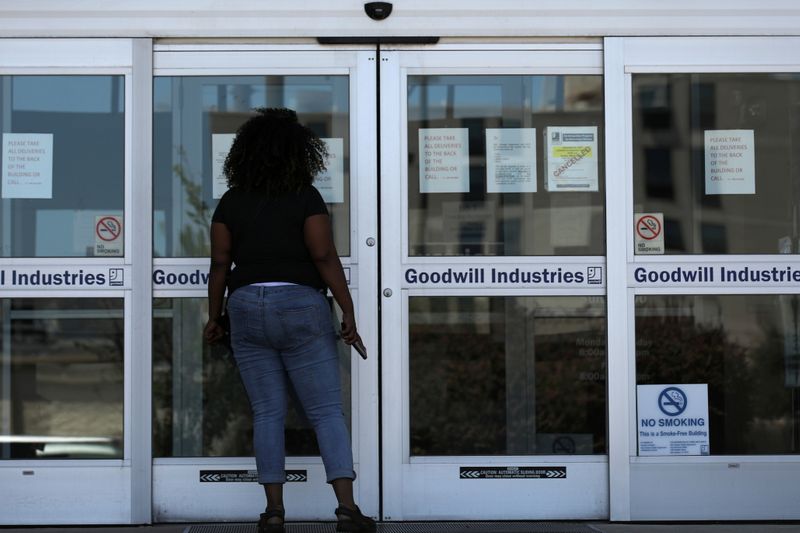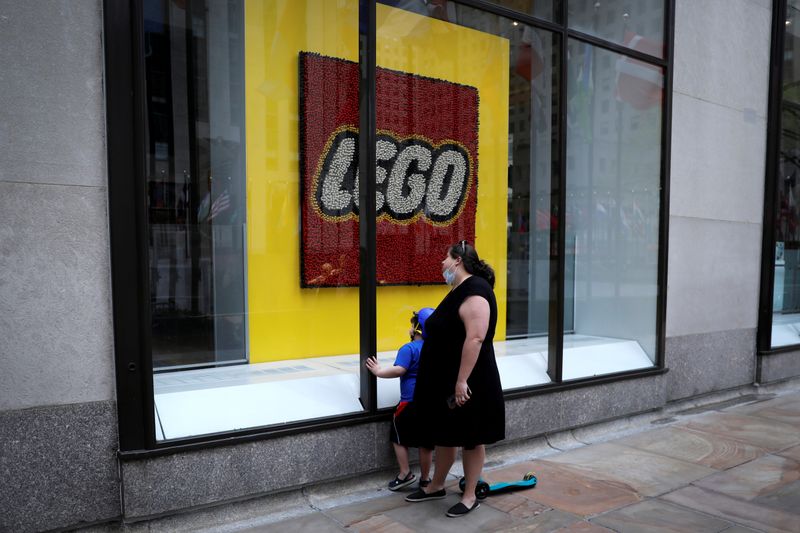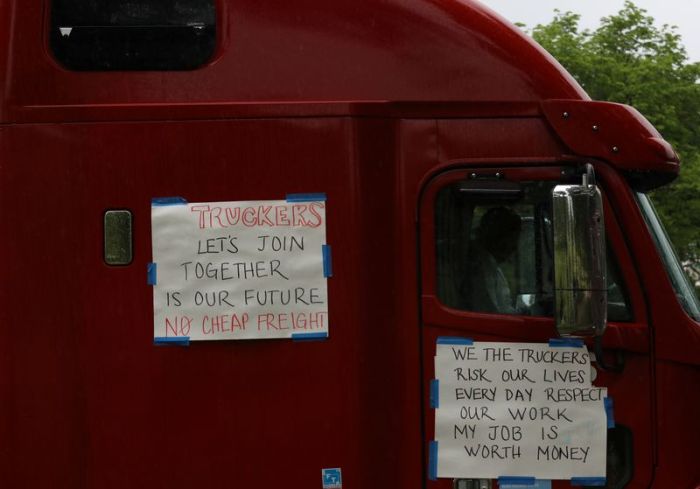WASHINGTON (Reuters) – The novel coronavirus crisis continues to pummel the U.S. labor market, with the number of Americans filing for unemployment benefits falling less than expected last week, suggesting a second wave of layoffs in industries and jobs not initially impacted by business closures caused by the pandemic.
The Labor Department’s weekly jobless claims report on Thursday, the most timely data on the economy’s health, supports economists’ contention that it would take a while for activity to rebound even as businesses in many states reopen after shuttering in mid-March as authorities tried to slow the spread of COVID-19, the respiratory illness caused by the virus.
Federal Reserve Chair Jerome Powell on Wednesday warned of an “extended period” of weak growth and stagnant incomes. The economy lost a staggering 20.5 million jobs in April, the steepest plunge in payrolls since the Great Depression of the 1930s. Economic output dropped in the first quarter at its sharpest rate since the 2007-09 Great Recession.
“Unemployment claims still show continuing devastation for American families,” said Robert Frick, corporate economist at Navy Federal Credit Union in Vienna, Virginia. “The predicted ‘second wave’ of layoffs may have started. This is more layoffs building on the initial layoffs, as middle management and those in support industries lose their jobs.”
Initial claims for state unemployment benefits totaled a seasonally adjusted 2.981 million for the week ended May 9, the government said.
Economists polled by Reuters had forecast applications for unemployment benefits totaling 2.5 million in the latest week. The higher-than-expected number was partly boosted by Connecticut, which incorrectly reported data for last week.
“#USDOL May 14 report shows CT with 298,680 initial UI (unemployment insurance) claims filed. Correct number is 29,846,” Connecticut’s department of labor said in a tweet.
A U.S. Labor Department official said the claims data for the week ending May 9 stood, adding that the new information from Connecticut would be incorporated as revisions when it publishes this week’s claims data next Thursday.
Claims totaled 3.176 million in the week ending May 2. Even accounting for Connecticut’s error, claims remain astoundingly high. They, however, have been gradually decreasing since hitting a record 6.867 million in the week ended March 28.
In addition to weak demand causing layoffs in industries and jobs not initially affected by the coronavirus shutdowns, the processing of application backlogs, which accumulated as state unemployment offices were overwhelmed by the unprecedented wave of applications, was keeping claims elevated, economists said.
They said some workers were likely filing more than one claim.
States continue to report layoffs in the accommodation and food services, healthcare and social assistance industries among other. They are also reporting redundancies in the professional, scientific, technical services and education industries.
Stocks on Wall Street ended higher as investors weighed the prospect of economic recovery against bellicose remarks from President Donald Trump regarding U.S.-China trade.
The dollar was little changed against a basket of currencies. U.S. Treasury prices rose.
MILLIONS UNEMPLOYED
The latest numbers lifted to 36.5 million the number of people who have filed claims for unemployment benefits since mid-March, or more than one in five workers losing their job. Claims will be closely watched in the coming weeks for signs whether companies rehire workers as businesses reopen.
Though many parts of the country are reopening, businesses and factories are operating well below capacity. Unadjusted claims for Florida and Georgia, which have led the easing of restrictions on businesses, increased last week.
While some businesses have accessed loans from an almost $3 trillion fiscal package, which could be partially forgiven if they use the credit for employee salaries, many small enterprises are expected to close permanently, leaving some of the 21.4 million people who lost their jobs in March and April out of work for a long time.
“Jobless claims pour cold water on the V-shaped recovery talk,” said Chris Rupkey, chief economist at MUFG in New York. “Economic growth might get a boost from pent-up demand, but the labor markets have dug themselves a deeper hole that will be harder to climb back out of.”
But there is some cautious optimism. Thursday’s claims report also showed the number of people receiving benefits after an initial week of aid increased only 456,000 to a record 22.833 million for the week ending May 2. The so-called continuing claims data is reported with a one-week lag and remains well below the cumulative number of initial claims. Some economists view it as a better gauge of the labor market’s health.
“The gap between the two series is somewhat strange,” said James Knightley, chief international economist at ING in New York. “Not everyone will qualify for unemployment benefits and there may well be the case of double counting on initial claims as people try to register both online and by phone. There could also be issues with backlogs between filing and receiving benefits and then being classified as a continuing claimant.”
Economists believe April marked the trough in job losses and expect May payrolls to drop at least 15 million.
The Labor Department also reported that 3.4 million people had their applications for Pandemic Unemployment Assistance (PUA) processed in the week ending April 25.
The PUA program covers gig workers and many others who do not qualify for regular insurance unemployment, but have been forced out of work because of COVID-19.
(Reporting By Lucia Mutikani; Editing by Chizu Nomiyama and Andrea Ricci)




























